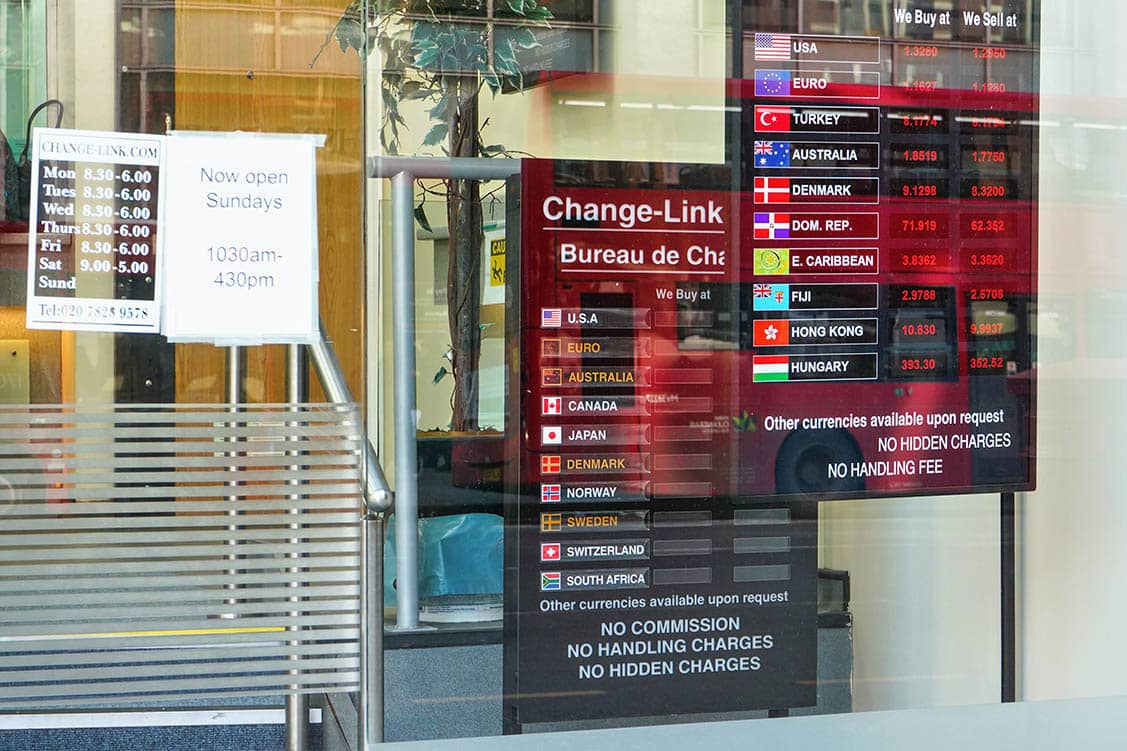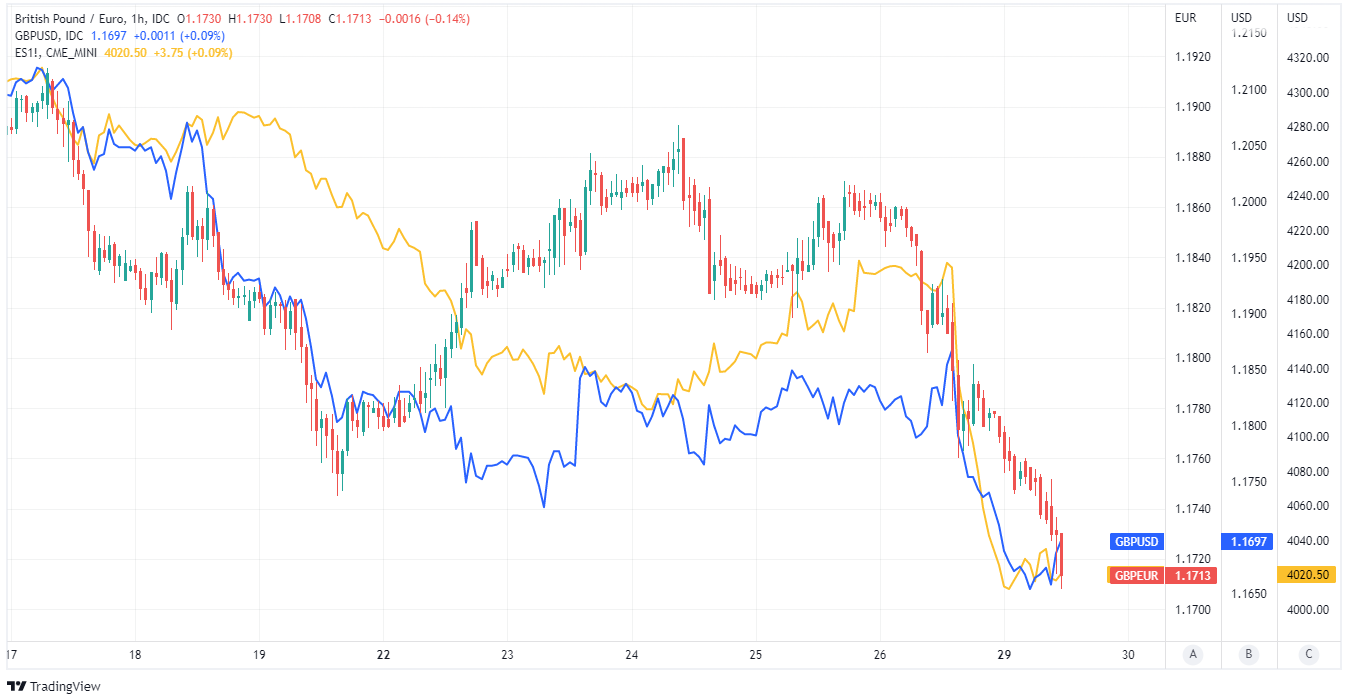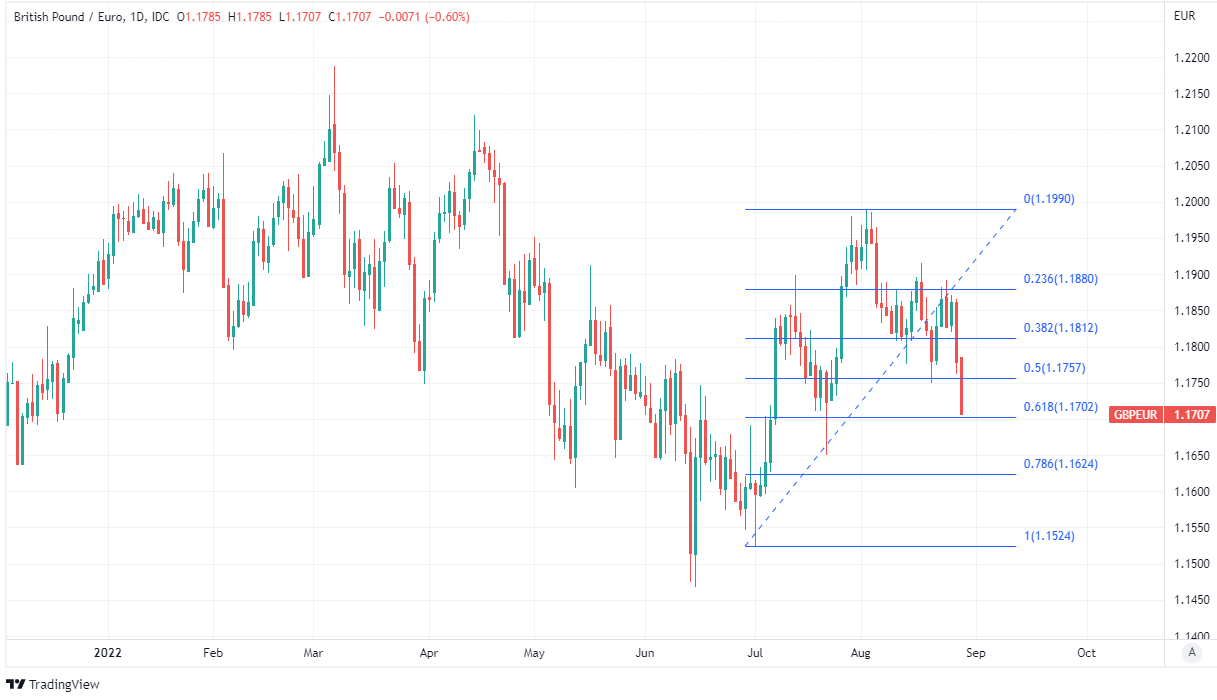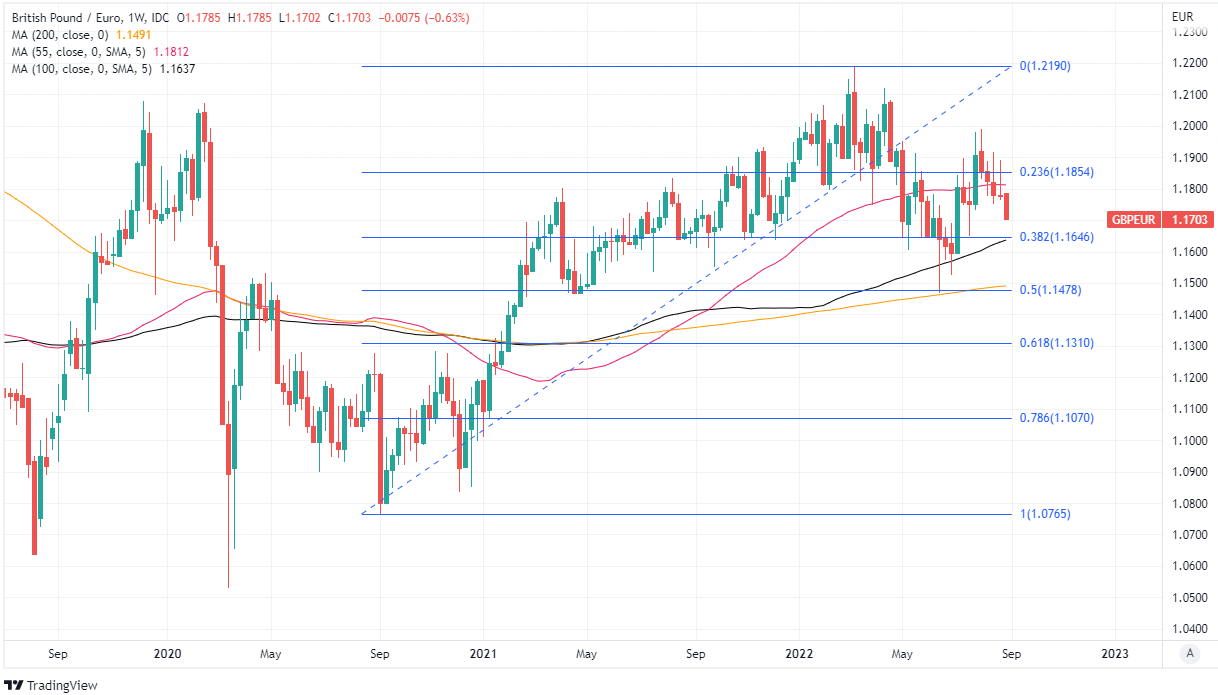GBP/EUR Week Ahead Forecast: Test of Major Support On Charts Possible
- Written by: James Skinner
- GBP/EUR risking foray beneath 1.17 short-term
- Probe of support near 1.1646 on charts possible
- If Federal Reserve inspired risk aversion persists
- Could hold 1.17 if markets stabilise & USD ebbs
- But recoveries may lose momentum above 1.18

Image © Adobe Images
The Pound to Euro exchange rate ebbed to a new August low in Bank Holiday trade but would run the risk of deeper losses that could see it testing a cluster of major support levels around 1.1646 on the charts this week without any improvement in risk appetite and the overall mood in global markets.
Sterling held up well when trading close to 1.18 against the Euro through much of last week but came undone on Friday when a keynote address from Federal Reserve (Fed) Chairman Jerome Powell was followed by widespread selling of risky assets that spilled over into Monday trading.
Appetite for the Pound also appeared to take a knock on Friday when the Office of Gas and Electricity Markets (OFGEM) announced on Friday an 80% increase in electricity and gas prices to take effect from October and warned that things “could get significantly worse through 2023.”
"This will further worsen the BoE’s growth/inflation trade-off. Given already very hawkish market expectations for rate hikes, we see limited room for front-end rates to sell off, while increased growth concerns, as suggested by the weak PMI prints last week, could eventually soften rate expectations. Hence, we expect the GBP to be vulnerable in the near term," says Marek Raczko, an FX strategist at Barclays.
"We expect GBP to continue to trade with global factors, especially the European risk sentiment pinned down by natural gas supply worries," Raczko said in a Monday look at the week ahead.
 Above: Pound to Euro rate shown at hourly intervals with GBP/USD and S&P 500 stock index’s e-mini future. Click image for closer inspection.
Above: Pound to Euro rate shown at hourly intervals with GBP/USD and S&P 500 stock index’s e-mini future. Click image for closer inspection.
Compare Currency Exchange Rates
Find out how much you could save on your international transfer
Estimated saving compared to high street banks:
£25.00
Free • No obligation • Takes 2 minutes
The Pound to Euro rate remained under pressure alongside stock markets and other risk assets on Monday after Fed Chairman Powell warned that U.S. companies and households will face growing economic hardship when the bank lifts its interest rate near to the four percent level over the coming months.
He also warned that U.S. interest rates are likely to be held at their anticipated peak of around 3.75% “for some time” and even in the event of an economic downturn in order to ensure that U.S. inflation comes down.
This is despite a technical recession and second quarter U.S. GDP contraction almost as large as that felt by the rudderless UK economy, which is also being crushed by ever-multiplying energy prices due to the Russian invasion of Ukraine and complete lack of a credible UK government energy policy.
“Indeed, we have a hole where productive investment needed to be to prevent our crisis,” says Michael Every, a global strategist at Rabobank.
“Clearly, we are close to banana republic stagflation - without the bananas,” Every said in a Monday market commentary.
 Above: Pound to Euro rate shown at daily intervals with Fibonacci retracements of July recovery indicating possible areas of short-term technical support for Sterling and resistance for the Euro.
Above: Pound to Euro rate shown at daily intervals with Fibonacci retracements of July recovery indicating possible areas of short-term technical support for Sterling and resistance for the Euro.
The Pound was left testing a technical support level around 1.1702 on the chart on Monday but would potentially find itself at risk this week of falling back into a cluster of more important support levels located around 1.1649 on the charts if the market continues to give Sterling a wide berth in the week ahead.
“The ongoing surge higher for gas prices in Europe has been encouraging market participants to price in more tightening from both the BoE and ECB in response to upside risks to the inflation outlook in the near-term. The UK rate market has experienced the largest hawkish repricing of BoE policy expectations,” says Derek Halpenny, head of research, global markets EMEA and international securities at MUFG.
“But based on the current macro risks related to the energy crisis in Europe we still see greater risks of the ECB and the BoE under-delivering on rate hikes compared to the Fed. OIS pricing shows the market expecting much more tightening by the BoE and little more by the ECB than the Fed. The hit to growth in Europe will likely undermine the scope for tightening even as further EUR depreciation unfolds,” Halpenny said on Friday.
The week ahead offers no meaningful appointments for Sterling but movements in energy prices and shifts in investor risk appetite are likely to matter for the currency while the Pound-Euro rate will also have Eurozone inflation data and European Central Bank (ECB) commentary to contend with too.
This is after European policymakers including Olly Rehn, Isabel Schnabel and Martins Kazaks suggested in various public appearances late last week and over the weekend that the ECB will very likely lift its interest rate by at least 50 basis points in September and potentially more.
 Above: Pound to Euro rate shown at weekly intervals with Fibonacci retracements of September 2020 recovery indicating possible areas of short and medium-term technical support for Sterling and resistance for the Euro. Selected moving-averages denote possible areas of support and resistance.
Above: Pound to Euro rate shown at weekly intervals with Fibonacci retracements of September 2020 recovery indicating possible areas of short and medium-term technical support for Sterling and resistance for the Euro. Selected moving-averages denote possible areas of support and resistance.
Compare Currency Exchange Rates
Find out how much you could save on your international transfer
Estimated saving compared to high street banks:
£25.00
Free • No obligation • Takes 2 minutes
“The comments could invigorate the build-up of ECB rate hike expectations that has been reignited by the relentless EUR-selloff and the escalation of European gas and energy prices so far in August,” says Valentin Marinov, head of FX strategy at Credit Agricole CIB.
“Indeed, the prospect for a more front-loaded ECB tightening cycle could trigger the unwinding of some EUR-funded carry trades and thus force investors to unwind some of their EUR shorts,” Marinov wrote in a Monday research briefing.
Last week’s policy commentary came after minutes of the July ECB meeting revealed growing concern at the bank about the steep trajectory of European inflation and strong momentum behind it now that elevated energy costs are seeping into other prices across the economy.
It also came just days ahead of this week’s release of European inflation figures for the month of August, which are due out on Wednesday and may act as a headwind for the Pound to Euro rate if they lead the market to bank on more aggressive action from the ECB in September.
However, GBP/EUR and the single currency more broadly may also be sensitive to the German inflation numbers due out on Tuesday as these are sometimes taken by the market as indicating the likely outcome for the rest of Europe.




